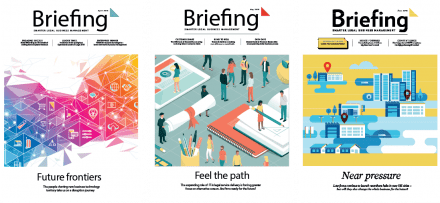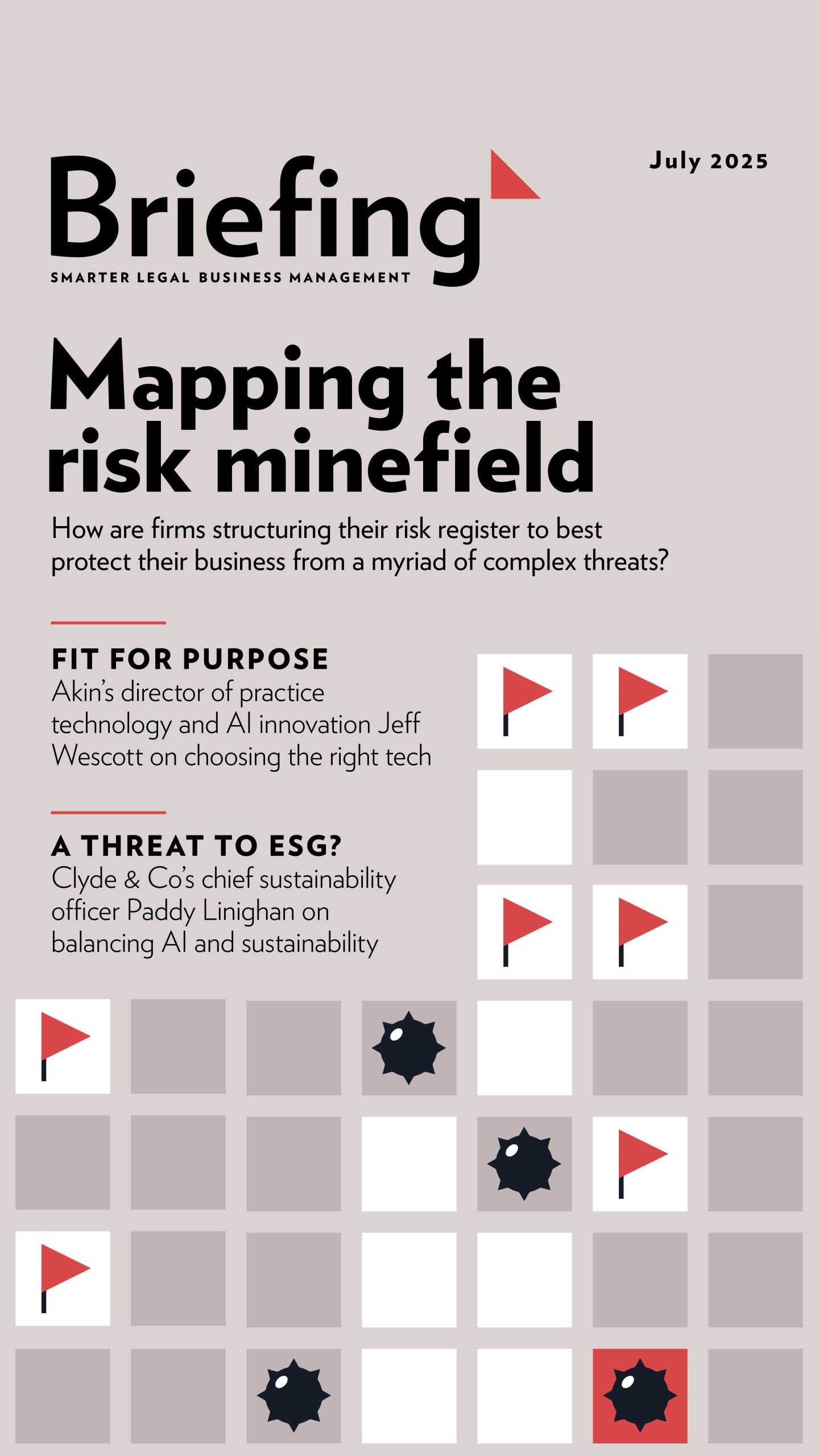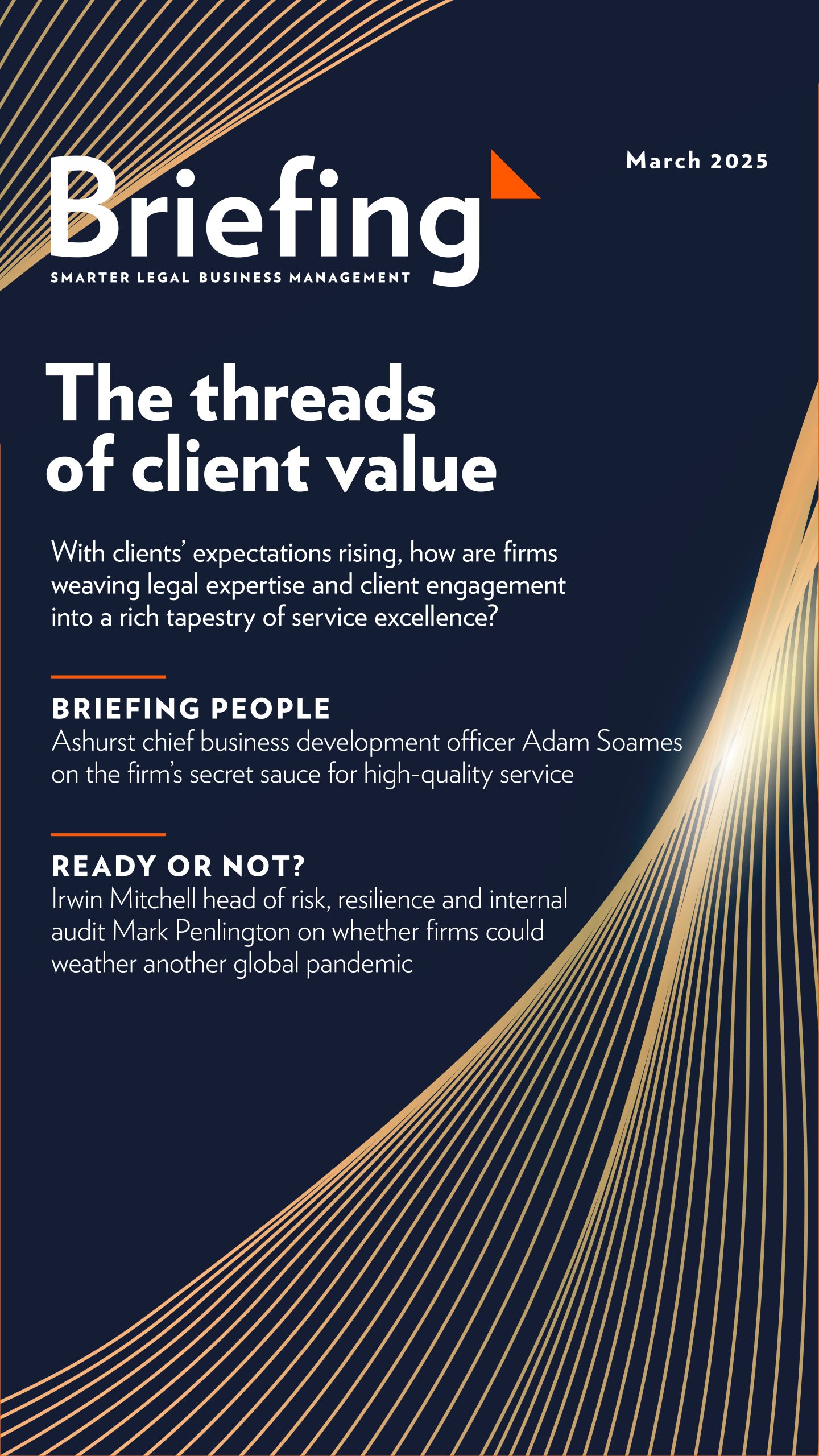KNOWLEDGE AND IT LEGAL LEADERS DISCUSS DOCUMENT MANAGEMENT CHALLENGES IN A REMOTE WORKING WORLD
Alison Devlin, head of knowledge, Eversheds Sutherland |
John Hunter, chief information officer, Council of Europe|
Simon Ferres, CIO for legal, Deutsche Bank |
Dan Hauck, chief product officer, NetDocuments|
As law firms are set to shortly have their hybrid working models tested out in practice, can their people access and work on documents as effectively as they should? Do they have the tools needed to ensure client service is still a top priority, even when remote? And how do firms factor the risks associated with sensitive information into a world of remote document management?
These are the questions our panel of legal document management and knowledge experts aimed to tackle in Briefing’s latest webcast: How to transform remote collaboration. With three legal leaders from three very different organisations all having completed or facing document management system (DMS) migrations, and all facing similar challenges, we heard how each was tackling the task of balancing access to documents against the risks of losing control over content. Chaired by Richard Brent, editor-in-chief of Briefing, our speakers were:
- Alison Devlin, head of knowledge, Eversheds Sutherland
- John Hunter, chief information officer, Council of Europe
- Simon Ferres, CIO for legal, Deutsche Bank
- Dan Hauck, chief product officer, NetDocuments
Documenting collaboration
Kicking off, we heard how John Hunter at the Council of Europe realised the organisation’s IT strategy needed an efficiency revamp. Working with over 10,000 external parties, however, access and security were a high priority. In order to migrate its 35m documents from shared drives and public folders to a single platform, Hunter explained the organisation had to develop a strong change management process.
That’s an issue also highlighted by Simon Ferres at Deutsche Bank, who said much of the migration to DMS provider NetDocuments has included a “carrot and stick approach”. In terms of lessons learned so far from rolling out a new DMS, he said it’s been important to keep an open mind and put the time in to get the most out of the IT investment: “When it comes to decision-making in the design phase, don’t just accept the status quo. You may not make back your ROI if you don’t challenge it.”
Command and control
Aside from also having a new DMS on the horizon, at Eversheds Sutherland, Alison Devlin outlined a Teams-based initiative executed at the firm to create new content in support of regulatory horizon scanning for the financial services practice. MS Teams channels supported a global approach to frictionless sharing and collaboration on that issue, though she acknowledged the challenge this approach poses to the idea of a single source of truth – an issue being grappled with across many organisations.
So, how to tackle the issue of controlling content in this new world? That risk is something John Hunter is also looking at, with a keen eye on use of collaboration tools like Teams, which, if unchecked, could be akin to “opening up the Wild West” when it comes to keeping a rein on documents and knowledge. That’s why collaboration spaces and tools that retain data and communications transparently are so useful, he added.
The need to bring together content and invite people into a single platform to get the benefit of a collaborative approach – while retaining control – is a common theme across many firms, said Dan Hauck. That approach necessarily includes keeping an eye on integration with related tools like Teams, he said, for which tech providers like NetDocuments have a large role to play.
Learn more about where each of our speakers is on the remote document collaboration journey, how they’re tackling emerging challenges and what solutions they recommend to solve common issues, plus hear answers to audience questions, by watching the full video.
Want to watch the video on YouTube? Click here.
Pressure pointers
Dr Rob Archer, director|Cognacity
Keith Froud, international managing partner, Eversheds Sutherland, and Dr Rob Archer, director of Cognacity, explain why they’re training lawyers to achieve a mindset commonly found among professional tennis players.
Almost two years after launching a firm-wide wellbeing programme in May 2018, Eversheds Sutherland has now rolled out an organisation called Cognacity’s ‘Sustaining peak performance’ workshops in the UK.
Cognacity’s Performing under pressure programme combines preventative mental health expertise from its clinic and the performance focus from elite sport. The programme, built on principles taken from cognitive-behavioural therapy (CBT) and acceptance and commitment therapy (ACT), empowers people with awareness and reflection tools. These therapeutic approaches are adapted to build resilience – essential techniques to enable a workforce to perform under pressure and sustain high levels of performance in a way that does not compromise its mental health.
Research shows recurring themes relating to poor lawyer wellbeing, including long hours, poor work-life balance, perfectionism and overachievement, as well as a cultural stigma around mental health difficulties in law firms. The aim of Cognacity’s workshops is to enable legal professionals to move beyond survival mode – to thrive.
There is a difference between ‘pressure’ and ‘stress’, and understanding this difference helps us to respond proportionately to the event we are experiencing and protect our emotional resources. An example of this might be focusing on the elements of a situation within our control, rather than wasting energy trying to control the uncontrollable.
Pressure is our response to an external event imposed upon us – whether a fast-approaching deadline or presenting in front of senior colleagues. The intensity of the physical, emotional, and psychological demands is largely subjective – two different individuals can tackle the same event with completely different levels of pressure. One can even create more pressure by imagining consequences if things don’t go according to plan.
Stress on the other hand is a physiological response: a flood of hormones cause increased heart rate, sweating, and a nervous feeling. The level of stress generated by a specific situation depends on whether a person perceives the situation as a threat – rather than the threat being objective.
Eversheds Sutherland understands that its people work in an increasingly high-performance, and often pressured, environment – so the programme supports in achieving high performance levels in a way that is sustainable and doesn’t result in stress.
Read the full story in Briefing April 2020, here.








